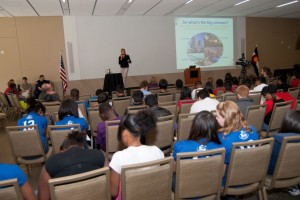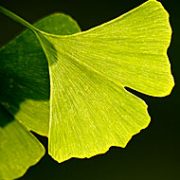History Colorado Center Hosts Its First Smithsonian National Youth Summit
Special thanks for this guest post to Liz Cook, Environmental Educator at History Colorado.
We were thrilled that the History Colorado Center was to be selected as one of the nine Smithsonian Affiliate sites to participate in the National Youth Summit: Dust Bowl on October 17, 2012. Over 150 high school and middle school students from around Colorado participated, including students from western Colorado, Denver, and the Colorado Springs’ neighborhoods that were impacted by this summer’s Waldo Canyon Fire. Students watched the live broadcast from the National Museum of American History, which included insights from Dust Bowl survivor Cal Crabill, who grew up near Holly, on the plains of eastern Colorado. In the second half of the Youth Summit, presenters made connections between current environmental issues in Colorado and the lessons of the Dust Bowl, including hydraulic fracturing, wildfire, climate change and water. Media partner Rocky Mountain PBS taped the presentations, which will be available online for future use by students and teachers. The Youth Summit was a perfect opportunity for us to explore these topics, as our “Living West” exhibition (opening in 2013) will focus on how natural systems have impacted human history and how human choices have impacted the environment in Colorado, and will include stories of the Dust Bowl in southeastern Colorado, and current issues in our state.
- Roaring Fork High School, Carbondale, CO (Garfield County Libraries)-10 students
- Grand Valley High School, Parachute, CO (Garfield County Libraries)-10 students
- Dora Moore School, Denver Public Schools, Denver-87 students
- George Washington High School, Denver Public Schools-15 students
- Coronado High School, Colorado Springs School District 11- 17 students

Local Youth Summit Presentations
- “Colorado’s Water Future”
Kristin Maharg, Program Manager, Colorado Foundation for Water Education - “Catastrophic Wildfires in Colorado”
Einar Jensen, Life Safety Educator South Metro Fire Rescue Authority - Hydraulic Fracturing: Folly or Fortune?
Adrianne Kroepsch, Graduate Research Assistant, Center of the American West, and Doctoral Student, Environmental Studies, University of Colorado - “Snowpack in the Rocky Mountains”
Ryan Vachon, Director at Earth Initiatives and affiliate with INSTAAR (Institute for Arctic and Alpine Research, University of Colorado)
The National Museum of American History partnered with the National Endowment for the Humanities, WETA television, and Smithsonian Affiliations to present the National Youth Summit on the Dust Bowl. More information on upcoming National Youth Summits at https://americanhistory.si.edu/nys






